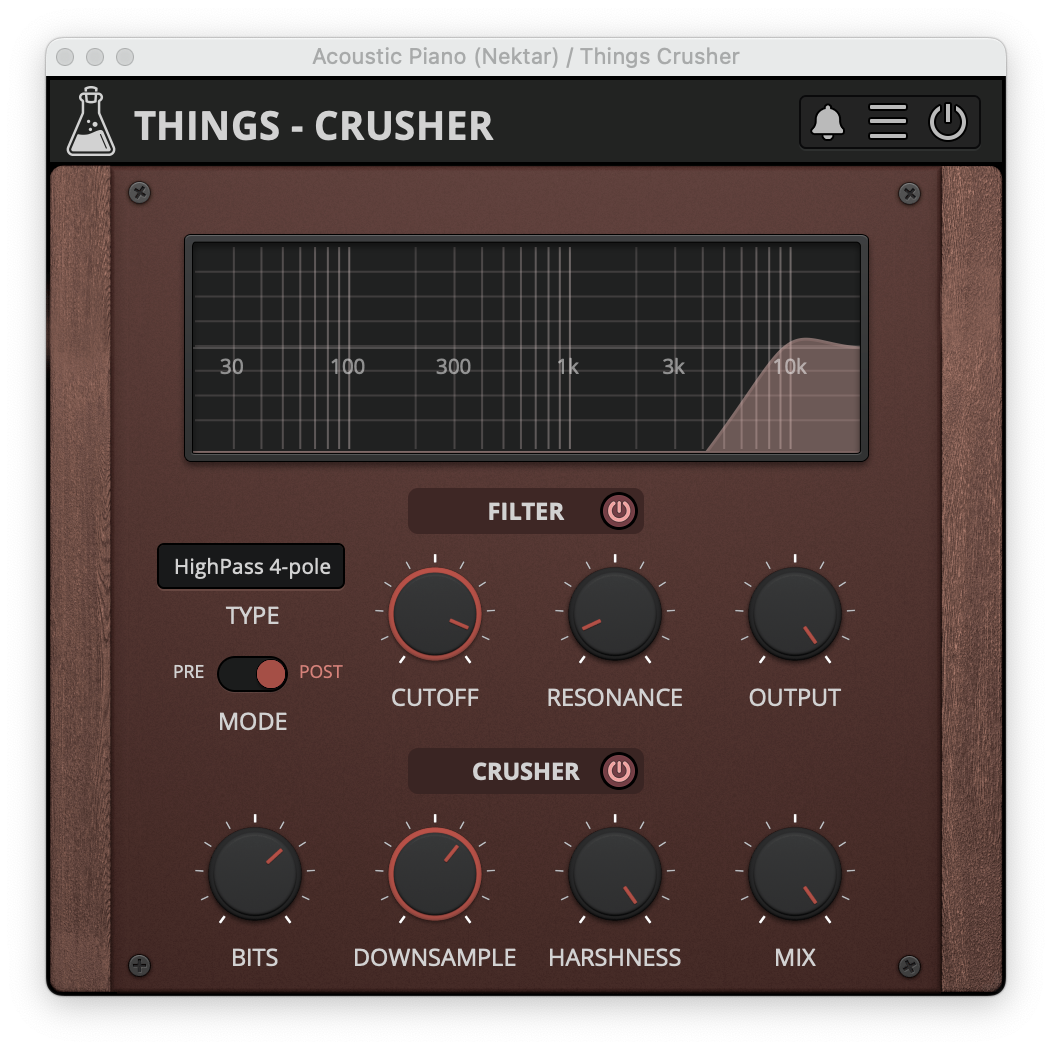Creating synthetic hi-hat's from bitcrusher aliasing
Synthesising hi-hats typically starts with some source of inharmonic sound – such as white noise – and then processing it with filtering, and envelope shaping. If we disregard realism, other sources of inharmonic sound can be fun and interesting tools. Sample rate reduction (“bitcrushing”) aliasing produces interesting inharmonic sounds with the useful property that the frequency distribution changes over time based on the input to the bitcrusher.
At a high level, we take some audio, reduce its sample rate enough to introduce a lot of aliasing artefacts, filter out the original sample so that we are predominantly hearing the aliasing noise, and finally use a make-up gain stage to bring the level backup to a usable level.

The input audio makes a big difference to this process. The harmonic content of the input, as well as its overall envelope, will heavily influence which frequences end up in the aliasing. I’m looking for input sounds where the harmonic content changes overtime, and have a percussive character already: piano keys, guitar, plucky synth sounds, etc. This results in the aliasing noise changing over time, and giving us a more interesting final sound as a result.

Here is an example using one of the stock piano samples from Bitwig, the Nektar Acoustic Piano, through Things – Crusher (above) to get the raw sample audio. I happen to like the Crusher UI and it has everything needed for this built in, but any bitcrusher, highpass, gain combo will do the job.
You can hear that the piano sample has an abbreviated decay and no sustain. The resulting alias noise is still too long for usable hi-hats, so the next step is simply to put the noise into a sampler, and reign the decay time way down. I also mapped velocity onto decay time for a little extra dynamics, and took advantage of the filter to do some additional tone shaping.

Here is a scruffy little demo of the hi-hats in context with kick, clap, and a simple baseline.